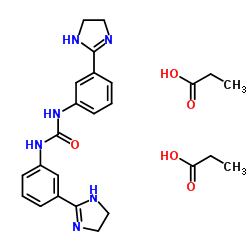Alterations in some blood coagulation parameters in naturally occurring cases of canine babesiosis.
Renata Barić Rafaj, Vesna Matijatko, Ivana Kis, Nada Kucer, Tatjana Zivicnjak, Niksa Lemo, Zdravko Zvorc, Mirna Brkljacić, Vladimir Mrljak
Index: Acta Vet. Hung. 57(2) , 295-304, (2009)
Full Text: HTML
Abstract
Changes in coagulation parameters were studied in dogs naturally infected with Babesia canis canis (n = 30), and haemostasis was evaluated and compared to values obtained from healthy dogs (n = 29). To date, there have not been any studies examining the dynamics of thrombin-antithrombin complex formation in cases of canine babesiosis. Coagulation parameters evaluated before (day 0) and on days 1, 2, and 3 after treatment with imidocarb (6 mg/kg inj. s.c.) included the determination of platelet counts, the formation of thrombin-antithrombin complexes (TAT), prothrombin time (PT), activated partial thromboplastin time (APTT) and antithrombin III (AT III) activity. TAT complexes were significantly elevated in animals with babesiosis on days 0 and 2 (mean 49.7 and 87.7 microg/L vs. control, 7.2 microg/L). AT III activity was significantly decreased at all time-points examined. There were no differences in PT. On days 2 and 3 the APTT was significantly shortened in the infected dogs when compared to control animals (means of 21.3 and 19.2 s vs. control, 30.0 s). Our analysis demonstrated that infected dogs had significant thrombocytopenia during the course of the study (mean day 0 - 29 x 10(9) /L, day 1 - 48 x 10(9) /L, day 2 - 47 x 10(9) /L and day 3 - 87 x 10(9) /L, vs. control -259 x 10(9) /L). These data suggest that babesiosis in dogs compromise primary and secondary haemostasis and that induction of disseminated intravascular coagulation (DIC) occurs in canine babesiosis.
Related Compounds
| Structure | Name/CAS No. | Molecular Formula | Articles |
|---|---|---|---|
 |
Imidocarb dipropionate
CAS:55750-06-6 |
C25H32N6O5 |
|
Comparison of glycopyrrolate and atropine in ameliorating th...
2013-09-01 [Equine Vet. J. 45(5) , 625-9, (2013)] |
|
Failure of combination therapy with imidocarb dipropionate a...
2011-09-01 [Parasitol. Res. 109(3) , 919-26, (2011)] |
|
Alterations of blood parameters after intramuscular administ...
2012-04-01 [Drug Chem. Toxicol. 35(2) , 162-6, (2012)] |
|
Severe anemia caused by babesiosis in a maned wolf (Chrysocy...
2012-03-01 [J. Zoo Wildl. Med. 43(1) , 162-7, (2012)] |
|
Induced mitotic homologous recombination by the babesicide i...
2012-01-01 [Genet. Mol. Res. 11(3) , 1810-8, (2012)] |